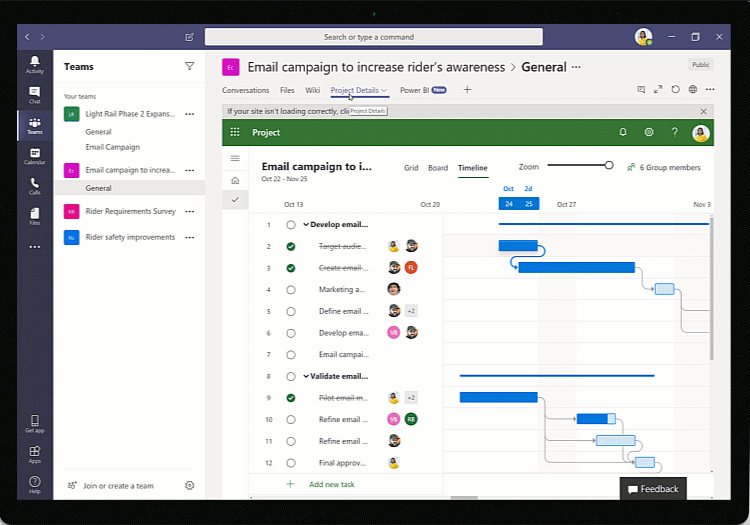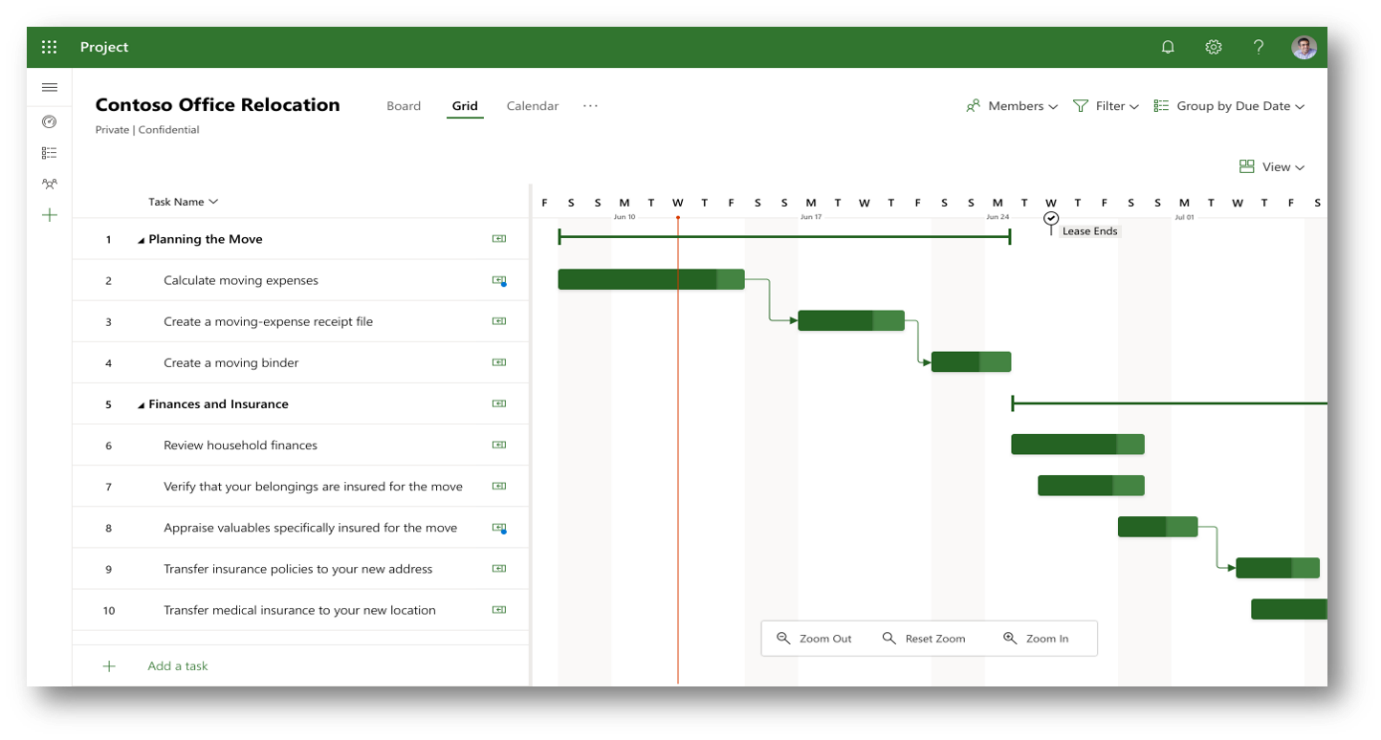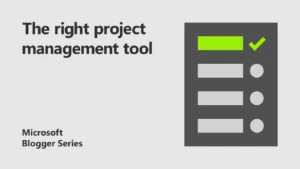
3 ways to tackle project management challenges and be more collaborative
Managing projects are part of our worklife. Whether it’s planning events, managing accounts, or recruiting new talent. Most of our projects involve other people, sometimes getting teammates organised around a project can be challenging. Throw in the fact that we all have different styles and methods of managing projects and it can be even more testing.
Without the right tools, it can be difficult to manage projects. And if those tools don’t communicate effectively to each other, that makes it even harder. Using tools within Microsoft 365 helps streamline processes and keep employees on the right task. They also work together to ensure projects run on time.
We spoke to three Microsoft employees from different areas of the business to find out what their main challenges are in their day to day job and how they’ve tackled it.
1. Create a hub of centralised information
The average worker spends nearly 20 percent of the work week looking for internal information or tracking down colleagues who can help with specific tasks. In many cases, information is spread out across disparate sources. We often find ourselves jumping from files saved to the desktop to specific SharePoint sites or as attachment within emails.
More often than not, information that isn’t stored on the cloud but on individual hard drives can cause considerable grief for project managers who collaborate frequently with others.
“Planning a marketing campaign has multiple dependencies, within my team and externally. Without the use of a dedicated project management tool it can be challenging to pulse check the status of each task and follow up when needed. Emails alone do not provide a holistic view of the project, especially when there are multiple versions of documents floating around,” says Alissa Warne, Digital Marketing Manager at Microsoft.
“Switching to Microsoft Project and ensuring that my main stakeholders also use it, centralises information so I only have to check one place for what needs to be done and what is completed. It also holds others accountable for their deliverables by sending them notifications.”
Project for the Web can help to provide visibility of the project’s current status through the Roadmap feature. This allows you to highlight specific project tasks or activities from several projects and share with different stakeholders.

Use Roadmap to get an overall view of several projects and key processes
Additionally, Project for the Web is embedded in Microsoft Teams. This makes it even easier for team members to see project status, task assignment, and any updates. Plus, it’s all in the same space where they communicate and collaborate. That means they can spend more time performing the work they need to do instead of switching between applications.

Project for the Web can be accessed through Microsoft Teams by embedding it in a separate tab.
2. Personalised assistants with AI
“Working in marketing you’d think that it’s all big campaigns and glamorous events, but as a product marketeer, I spend a lot of time managing projects. Projects means people, which means calendars,” says Hasan Javed, Microsoft Product Marketing Manager for Firstline Worker and Microsoft 365.
Finding the right time to meet between busy co-workers and customers can be difficult. Between finding time to brainstorm, map out the next quarter’s priorities, or plan events with partners, and even to answer emails from that ever-growing inbox. To help him effectively schedule his time, Hasan turns to Cortana, his virtual assistant.
“I can now email Cortana and ask her to schedule my meetings, book me a meeting room and set up a Teams meetings, all in one simple click. Cortana has improved my productivity by automating tasks that I, and 99 percent of people I know, hate doing. Thank you, Cortana, you’ve made my complex projects, just a little easier.”
Cortana not only can help manage your calendar, but can also remind you of your commitments, even if it’s just remembering to pick up milk on the way home. You can base your reminders on time, a location, or even people. This makes it easy to keep track during busy times, or when you have a full diary.
3. Using analytics to organise your time
Jose Cortes, is a busy commercial executive at Microsoft. He often finds it challenging to strike a healthy balance between his work and personal life. Particularly with a young child and jam-packed schedule.
Effective time management and prioritisation of important tasks are key here. He breaks his workload down to weekly chunks and prioritising tasks based on what will deliver the most impact. Doing this, Jose is able to determine how to effectively use his work day. He no longer has tasks that spill over into personal time.
“This is one of the most important things that Microsoft’s culture has taught me, in addition to having a growth mindset. Usually it is very easy to fall into executing tasks you enjoy doing, but not necessarily make impact in what you do. For instance, I sometimes find myself helping other colleagues or replying to emails in some topics that interest me. However, if at the end those email responses are not generating any value to my customers or my organisation, I’d park that email for a while. I focus on what really brings value, such as preparing for a negotiation with a customer. When I find some spare time, I take care of those other emails.”

Establishing clear duration and dates can help you organise your project
Jose also credits AI-infused applications with helping him reclaim time back in his day. He uses the My Analytics feature within Microsoft 365.
“It not only lets me know how much time I’ve been multitasking in the past week, or who are the people I collaborate with the most, but also remind me of pending tasks or responses based on emails I sent to customers or colleagues. Where you say, for instance, ‘I’ll update you next week’ or ‘I’ll send you that email tomorrow,’” He says.
“When it sees you are getting too many meetings or calls together in a specific day, it books Focus Time in my calendar. This is technology really helps me make a difference at work and in my personal life.”
Tools like Microsoft Project enable Jose to have an overall view of all the current projects and what is on track or late. Project for the Web, in particular, highlights what tasks are overdue in different colours. This makes it easier to follow up at a glance. He can also use Power Automate to generate an automatic report with all overdue tasks.
Enabling productivity
These project management challenges are common to all of us. But by adopting digital tools and smarter working habits, it can contribute to the successful delivery of the project.
Using a cloud-based project and portfolio management solution will go a long way in helping employees align, prioritise, and optimise their projects. And once they harness these tools, it will give them the time they need to focus on adding value to the business, their roles, and creating an innovative, collaborative culture.
To find out more about selecting the right project management tool for you, check out my earlier blog. Or, read more about Project for the Web.
About the author
 Paulina is a new Microsoft Aspire hire who just graduated from the University of Cambridge, where she completed her MBA. She is currently part of the Modern Workplace business group in the role of Product Marketing Manager for Project and Visio. She localises the benefits and uses of these Microsoft solutions to UK market. Paulina has a green belt in lean six sigma. She also has a strong belief in the search for constant improvement in everything we do. Be it learning a new language, improving at a particular sport, or just being smarter about the way we work.
Paulina is a new Microsoft Aspire hire who just graduated from the University of Cambridge, where she completed her MBA. She is currently part of the Modern Workplace business group in the role of Product Marketing Manager for Project and Visio. She localises the benefits and uses of these Microsoft solutions to UK market. Paulina has a green belt in lean six sigma. She also has a strong belief in the search for constant improvement in everything we do. Be it learning a new language, improving at a particular sport, or just being smarter about the way we work.




